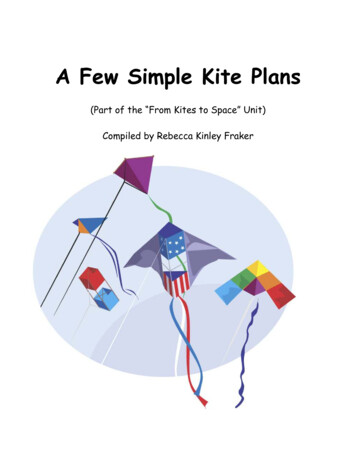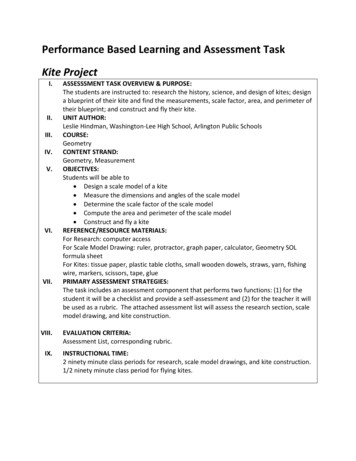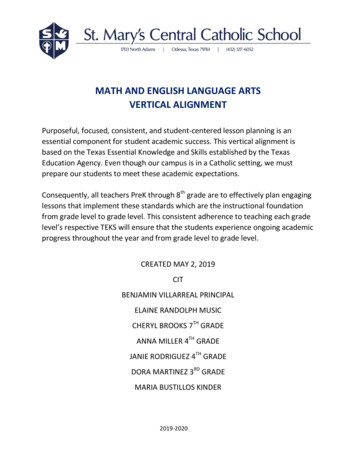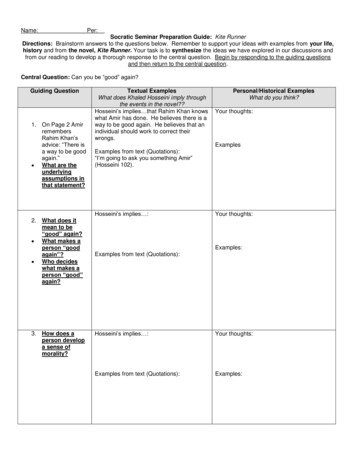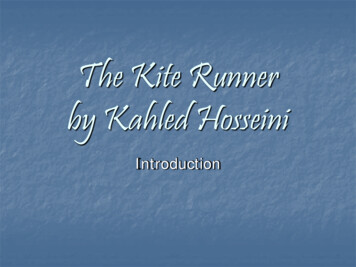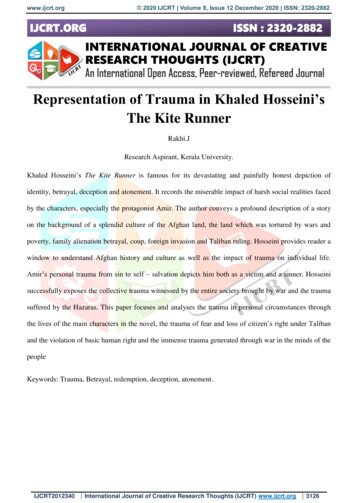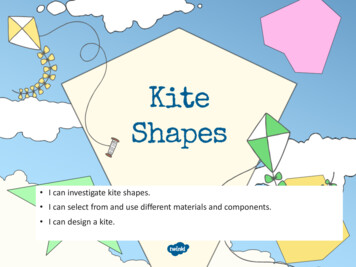
Transcription
I can investigate kite shapes. I can select from and use different materials and components. I can design a kite.
How a Kite FliesKites need to have a large area that catches the wind. This is called the body,cover or wind receiving plane.Photo courtesy of diana robinson (@flickr.com) - granted under creative commons licence - attribution
How a Kite FliesAs someone runs with a kite, the windgoing head-on into the kite createsa force that pushes up on the kite.This force is called lift.This lift force goes perpendicular to thewind and it pushes the kite up into the air.At the same time, another force pulls thekite back.Drag is caused by the wind catching on thekite itself, pushing the kite back in thedirection that the wind is going.WindThis force is called dragAltogether, these forces cause the kite to goback and up when you fly it.LiftDrag
Kite NamesDiamondThe Diamond kite is probably the most recognised type of kite. For many years it hasremained popular due to its stable and reliable flying characteristics.Just about any flat kite will fly in a morestable way with a bow built into it.The Diamond kite is no exception.With the cross spar bent back, away fromthe flying line, the kite will require less tailto fly successfully.With enough bow, no tail is necessary at all.A lightly constructed flat diamond willsometimes bow a little anyway in strongwind thus giving itself a little more stability.Photo courtesy of Ballayet - granted under creative commons licence - attribution
Kite NamesRokkakuThe Rokkaku kite is a traditional Japanesefighting kite .The Rok, as it is often referred to, is atailless bowed design.The bow adds stability, making it an easykite to fly.The Rokkaku is hexagonal in shape.Photo courtesy of N Blueion - granted under creative commons licence - attribution
Kite NamesDeltaThe fourth letter of the Greek alphabetlooks like a triangle and is called Delta,hence the name of this kite!The Delta design is an efficient one thatoutperforms most other flat kites in lightwinds.The Delta can be made with or without akeel.Photo courtesy of Paavans - granted under creative commons licence - attribution
Kite NamesSledThe original type of Sled has 2 straight sparsrunning the length of the kite, and a tailhanging from the bottom end of each spar.Air pressure then keeps the sail open andholds the kite's shape while it flies.The Sled requires almost no setup timebefore flying!That's the beauty of Sleds of all kinds.Photo courtesy of Mark Taylor (@flickr) - granted under creative commons licence - attribution
Kite Shape ChallengesWhich shape was thehardest/easiest to make?Why?Which material was thehardest/easiest to make?Why?
Kite Shape ChallengesWhich shape was thehardest/easiest to make?Why?Which material was thehardest/easiest to make?Why?DeltaSledDiamondRokkaku
Shape, Materials, Measurementsand DecorationToday you will need to think of a design foryour kite.Firstly, you need to decide upon the shape,materials and measurements.Your shape should be based on one youlearnt about however you can alter andadjust the shapes.You will need to decide and write themeasurements for your kite onto yourdesign.You can use colours to add decoration ontoyour design remembering the decorationneeds to represent the sporting event.
DesigningDon’t forget: Decide on the shape of your kiteDecide which materials you will useWrite the measurements for your kiteon your designDecorate your kite with a sportingthemeHave fun!
Kite Names Photo courtesy ofMark Taylor (@flickr) -granted under creative commons licence -attribution Sled The original type of Sled has 2 straight spars running the length of the kite, and a tail hanging from the bottom end of each spar. Air pressure then keeps the sail open and holds the kite's shape while it flies.

